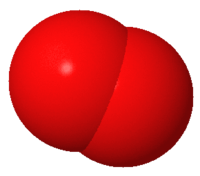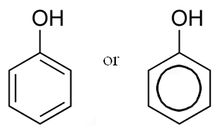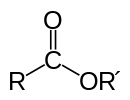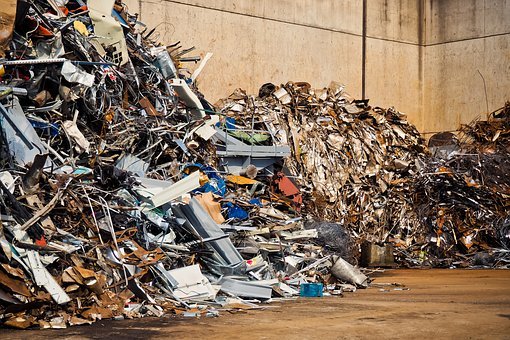Crude Oil, Part 2
Crude Oil, Part 2

Crude Oil
In part one of my series, we were introduced to the term crude oil and we developed to understand that crude oil is an extremely complex fluid that is of great importance to man. We were introduced to the different layers of crude oil, and we begin to understand the constitution in each of the layers of the fluid. We were introduced to the main constitute of crude oil, which were hydrocarbons, and we ventured further by understanding the major types of hydrocarbons that were present in crude oil. It is important to understand that hydrocarbons form the organic portion of crude oils, and for this reason, is considered the pure portion of the fluid. However, just like life, not all situations are ideal. Crude oil also consist of non hydrocarbon compounds which are considered to be the impure portion of crude oil. In this post, we will be exploring these non hydrocarbon compound, and will be analysing their uses as well as their advantages and/or disadvantages.
Sulphur
In most processes around the world, there is often noted a similar impurity that is present in all of these industries, and the crude oil manufacturing process is no exception to this impurity. The infamous culprit in the chemistry world is none other than sulphur. Sulphur is allowed to be present in crude oil, but in very small quantities of around less than 0.4% of the crude oil composition. When this quatitative amount is breached, the quality of the crude oil immediately deteriorates, and when this occurs, the resulting oil cannot be further processed to make other products such as petrol via direct uses. Instead, the fluid must undergo further refining, in which the excess sulphur is removed from the fluid, thus incurring more costs in its production. The term used for crude oil that has a higher level of sulphur than that which is specified, is termed “sour crude oil”.
In the fluid, sulphur can be present in many different compounds. The main three compounds that are found containing sulphur are:

Different Organic Sulphur Compounds
- Hydrogen sulphide- commonly known to have the undesirable smell of rotten eggs, this colourless gas is quite often associated with petroleum gases and is known to be dissolved in the crude oil add specific pressure conditions, as well as temperature conditions, that are known to be prevalent in the formation of the oil.
- Elemental sulphur- sulphur is the 16th elements on the periodic table, is one of the most abundantly found elements in the world. It is therefore likely to be known that elemental sulphur is also quite distinguished in the composition of crude oils. Elemental sulphur can be present in the fluid as it can be initially dissolved into it, or could be dissolved into the oil over a certain period of time whereby sulphur forms via the oxidation of Hydrogen Sulphide.
- Mercaptans (thiols)- thiols, which are commonly known as mercaptans, have the common chemical resemblance of R-S-H (a chemical model). Mercaptans are present in crude oil of temperatures lower than 200 degrees Celsius, where low boiling fractions are present. Cyclic mercaptans are known to be present in the kerosene range, along with cyclone alkanes such as cyclohexane or even cyclopentane rings.
Nitrogen
Nitrogen, which was discovered in 1772 by the Scottish physician known as Daniel Rutherford, has an atomic number of 7. Although nitrogen plays an important part in the production of fertilisers (which helps sustain the world’s food demand), it is extremely dangerous in the world of chemical engineering, in particular, in the processes of crude oil production. Nitrogen is only allowed to be present in significantly small amounts in comparison to that of the overall fluid. The maximum allowable percentage is 0.1 or less. Nitrogen greatly affects the fuels as it degrades the fuels, as even causes instability problems of the fuel. In turn, by the use of this inferior fuel, the engine performance of the vehicle containing this fuel would be significantly reduced. Nitrogen also causes extreme environmental problems and contributes greatly towards air pollution, and thus, must be removed and prevented from entering the atmosphere in extremely large amounts. To prevent nitrogen from returning into the atmosphere, it is often combined with other elements to form useful compounds, such as ammonia. In crude oil production however, this conversion is not necessarily done, therefore, the amount of nitrogen present is always kept to a bare minimum.

The shapes of the 5 orbitals of nitrogen
Oxygen
The third most abundant element in the world (based upon mass), and considered one of the most important elements to man, oxygen is also quite often found in the composition of crude oil. The total amount of combined oxygen present in that of crude oils are generally very low, and are known to range to a maximum weight percentage of roughly 2%. The oxygen composition within the fluid is known to represent that of a proportional relationship with the boiling point of the fraction, therefore, residue oils (which are known to have a higher boiling point than that of the crude oil) have a much higher oxygen content within the fluid. The weight percentage of oxygen present can be as high as 8%.
Besides elemental oxygen, oxygen can also be present in many compounds, similar to the methods as aforementioned, in relation to sulphur. They can be present as/in the following functional groups,
Phenols and organic acids- commonly known as the most acidic constitutes in that of the lower boiling fractions of crude oil, phenols and organic acids such as aliphatic carboxylic acids are present. These compounds consist of oxygen atoms and the number of oxygen atoms present are proportional to the chain length, which is characterised by the number of carbon atoms present. In the case of crude oil, a chain consisting of between 1 and 20 carbon atoms are possible to be found.
The acidic compounds, that are found and separated from the residual, may also contain oxygen compounds. The oxygen compounds are generally chemically combined to the residuals that range between the molecular weights of 700 to 1400 g/mol. Cyclic carboxylic acids (those that are monocyclic as well as bicyclic) form the major components of acid compounds in fuel categories such as kerosene as well as naphthenic acid.
- It is not uncommon to find esters of aliphatic carboxylic acids in some fractions of the petroleum industry. The oxygen component is also present in these forms.
Metals
When crude oils are burnt, a residue of ash is left behind, due to the inorganic soluble salts. When this occurs, other metals are also present in the form of oil, such as metallic compounds or in the form of colloidal suspensions.
But back to the composition of the original crude oil, two groups of elements are present in significant concentrations in the original fluid. These 2 groups can be split up such as:
Zinc, calcium, titanium and magnesium. The common property between these elements is the ability to be absorbed in the water and oil interface, and thus, acts as an emulsion that stabilizes the fluid.
Vanadium, nickel, cobalt and iron. These elements are very soluble in nitrogen complexes and can occur as extremely stable oil.

Metal Corrosion
The disadvantage related to these elements, are the undesirable negative impact to an engineering site. It is not uncommon for corrosion of pipes as well as stainless steel piping to occur, and as a result, the production of inferior quality products and accompanied by the negative effect on the environment.
This brings us to the end of my 2 part series on Crude Oil. I hope you have gathered some knowledge related to its production as well as enjoyed the read.
Images are linked to their sources in their description
The End
References:
[1]https://en.wikipedia.org/wiki/Petroleum
[2]https://en.wikipedia.org/wiki/Components_of_crude_oil
[3]https://www.britannica.com/science/petroleum/Nonhydrocarbon-content
[4]www.uobabylon.edu.iq/eprints/publication_11_12568_432.pdf
[5]https://en.wikipedia.org/wiki/Sour_crude_oil
[6]https://www.rigaku.com/en/node/3625
[7]https://www.onepetro.org/conference-paper/SPE-37224-MS







Congratulations @akeelsingh! You have completed some achievement on Steemit and have been rewarded with new badge(s) :
Click on any badge to view your own Board of Honor on SteemitBoard.
For more information about SteemitBoard, click here
If you no longer want to receive notifications, reply to this comment with the word
STOP